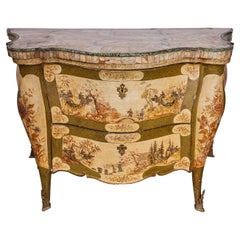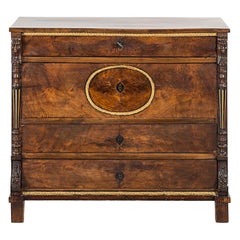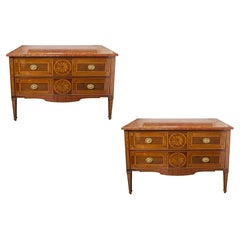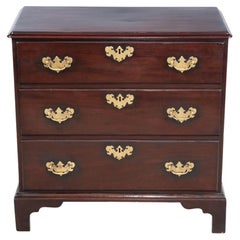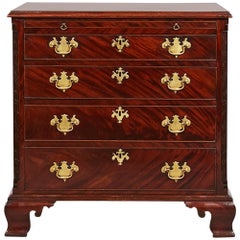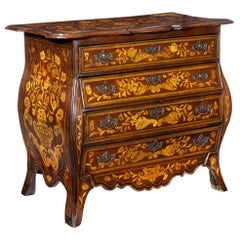Early 1800s Commodes and Chests of Drawers
to
12
Height
to
Width
to
Depth
to
32
31
67
13
13
10
4
2
1
2,050
3,091
4,664
1,509
784
2,248
847
104
35
120
200
227
463
559
343
155
48
67
27
25
18
12
58
19
10
7
7
67
67
67
1
Period: Early 1800s
Exceptional, Period Chinoiserie Commode
Located in Los Angeles, CA
A most unusual and rare, c. 1800, hand-carved and painted, serpentine, Venetian, Chinoiserie commode in the bombé style, with rounded legs terminating in ormolu feet. The whole richl...
Category
Italian Antique Early 1800s Commodes and Chests of Drawers
Materials
Onyx, Marble, Bronze
19th Century Walnut Swedish Writing Commode / Chest of Drawers
Located in Barcelona, ES
19th century Swedish writing commode / chest of drawers
Date: 1800
Material: Walnut
Structure: Three drawers with key included.
Category
Swedish Gustavian Antique Early 1800s Commodes and Chests of Drawers
Materials
Walnut
Pair Italian Marquetry Marble Top Commodes
Located in Los Angeles, CA
Pair walnut and pear-wood veneered, marquetry commodes, with medallions on the 2 drawers and tapered legs. Gilded bronze mounts and rouge marble tops.
Category
Italian Antique Early 1800s Commodes and Chests of Drawers
Materials
Bronze
$58,000 / set
George III Bachelor's Chest
Located in Dublin 8, IE
A very fine George III three-drawer bachelor's chest. This piece sits on simple ogee bracket feet and the drawers are complete with brass pulls and e...
Category
Irish George III Antique Early 1800s Commodes and Chests of Drawers
Materials
Brass
$11,509
Early 19th Century George III Bachelor’s Flame Mahogany Four-Drawer Chest
Located in Dublin 8, IE
Early 19th century George III bachelor’s flame mahogany four-drawer chest with pull-out writing slide, brass pulls, canted corners with relief carving supported on ogee bracketed feet.
Category
Irish George III Antique Early 1800s Commodes and Chests of Drawers
Materials
Mahogany
Period Dutch Mahogany Four-Drawer Bombe Marquetry Commode, 1800
Located in Lymington, Hampshire
A period Dutch mahogany four-drawer bombe marquetry commode, the serpentine shaped top overhanging four graduated drawers, three with bombe front and sides, above a serpentine apron and splayed feet, profusely decorated throughout with variegated boxwood, the top and sides each with an oval panel enclosing a central vase of flowers, cornucopia and scrolls, the drawers with paired cornucopia...
Category
Dutch Antique Early 1800s Commodes and Chests of Drawers
Materials
Mahogany
Faux Marbled, Venetian Commode
Located in Los Angeles, CA
A striking, c. 1800 hand-carved, painted, and parcel gilt Venetian commode with three, sinuously paneled drawers. The whole in faux verde and Siena ma...
Category
Italian Antique Early 1800s Commodes and Chests of Drawers
Materials
Wood
Recently Viewed
View AllMore Ways To Browse
Florentine Commode
French Country 3 Drawer Chest
French Rattan Commode
Geometric Carved Chest
Geometric Wood Chest
Henkel Harris Mahogany Chest
Hepplewhite Serpentine Chest Of Drawers
Large Brass Key
Linen Wrapped Chest Of Drawers
Lion Head Chest
Louis Philippe Mahogany Drawer Chest
Marc Normand Gelinas
Mcm Chest Of Drawers
Pagoda Drawers
Scalloped Chest Of Drawers
Silver Chest With Drawers
Syrian Mother Of Pearl Chest
Two Drawer Bombe Chest
